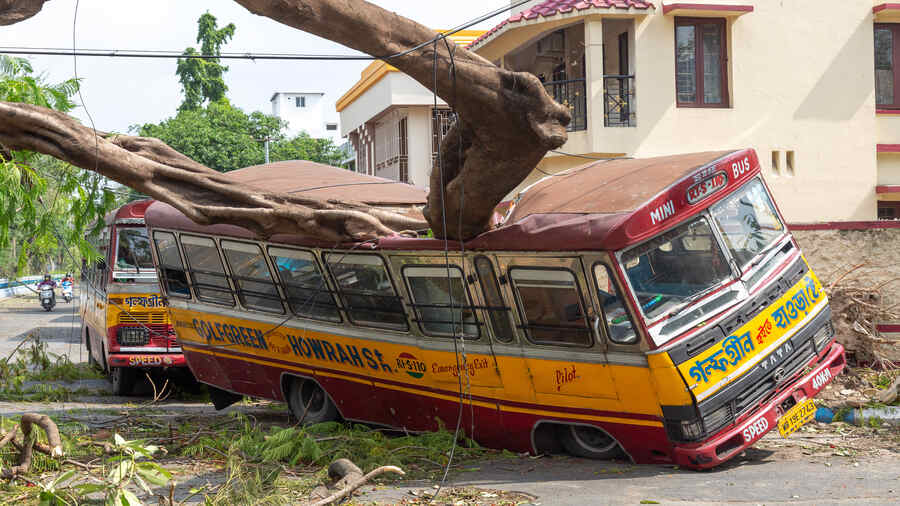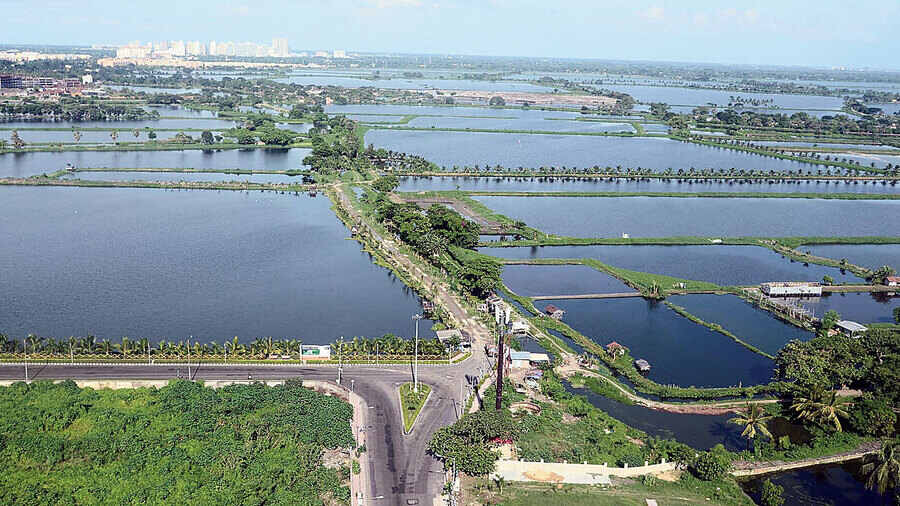We have heard a lot about climate change lately. What is it? What is causing climate change? How is it affecting us? Is the city of Kolkata prepared to withstand the effects of climate change?
First things first. Climate change is caused by excessive emission of carbon dioxide (CO2) and other Greenhouse Gases (GHG) like methane. These gases create a blanket around the atmosphere and trap heat, thereby warming our oceans and land surfaces.
As a result, the global surface temperature is 1.1°C higher today (2011-2020) than it was in pre-industrial times (1850-1900). This may not seem much as we are used to larger daily and seasonal temperature variations than this. However, this is different. This is a very long-term change in average global temperatures. In that context, 1.1°C is a big deal. It is akin to a human body constantly living with a fever of 100°F to 101°F instead of the normal body temperature of 98°F.
In other words, our world is feverish, and what we do now will determine whether it becomes even sicker or gradually recovers normalcy.
What is making our planet sick?
Science is now unequivocal that GHG emissions caused by human activities since the Industrial Revolution are causing climate change. These human activities include generation of electricity from fossil fuels (e.g., coal-fired power plants), emissions from transport (cars, buses, trucks, or anything that runs on petrol and diesel) and residential sector (our appliances, air conditioners, everything that runs on dirty electricity generated by fossil fuel). Agriculture also causes emissions, mostly in the form of methane gases.
Remember Amphan?
Climate change is affecting us in many ways. Whether you know it or not, you have felt the effects of climate change already. Do you remember Amphan? That cyclone picked up a massive amount of energy and turned into a super cyclone in less than 36 hours due to unusually high sea surface temperatures over the Bay of Bengal. Higher than average sea surface temperatures are a result of a warming climate.

A city bus crushed by an uprooted tree in the aftermath of Amphan in Kolkata. That storm turned into a super cyclone in less than 36 hours iStock
Most of us, and especially our farmers, have also experienced changing monsoon patterns, including extreme high rainfall, followed by long dry spells. Such changes in the water cycle are also caused by climate change. Flooding caused by extreme precipitation is one of the major impacts of climate change. We have all seen devastating news of floods from all around the world in recent months.
Kolkata is a natural sponge city
Now, coming back to our city, is Kolkata well equipped to deal with these kinds of extreme rainfall events and resulting floods? But first, let’s see what is the latest thinking around floods and urban spaces. The latest thinking is a concept called “sponge cities”. These are cities built with enough natural drainage spaces all around them. These could be natural or constructed wetlands and natural drainages like rivers, rivulets, streams, or constructed drainage like canals.
The idea is to surround cities with natural spaces to drain extra water instead of inundating the city during extreme rainfall events. China is constructing hundreds of these sponge cities or retrofitting existing cities to become sponge cities.
If sponge cities are the answer, we must feel relief knowing that Kolkata is a natural sponge city. The mighty Hooghly surrounds the city on one side and several wetlands – the hoars and the bils – on every other side. The East Kolkata Wetlands are not just the city’s lungs but also the sponge that soaks up all the extra water discharge from elsewhere. The numerous small ponds and waterbodies scattered throughout the city’s length and breadth are all the sponges we need. So, in some ways, we have the natural defences that a modern city might need to protect itself against the onslaught of extreme water events.
Are our “sponges” working well?
The answer sadly is no. Our sponges — our wetlands, waterbodies and ponds — are being encroached and turned into built-up spaces. In the process, the natural sponge city we inherited is practically losing its capacity to act as a sponge during extreme events. Who among you has not seen a waterbody been covered to make a multi-storey building and wondered how is that possible? I have wondered about it too, and I am convinced that we need stricter urban planning and zoning rules to make it nearly impossible to convert existing waterbodies into land for construction.

Munshir Bheri, part of the East Kolkata Wetlands. Can all our waterbodies in the city be protected too from further encroachment? File photograph
Thankfully, the East Kolkata Wetlands is well protected because of the visionary action of one well-meaning bureaucrat. Can all our waterbodies in the city be protected too from further encroachment? Then only will Kolkata become the sponge city that it really is.
Aditi Mukherji is a Principal Researcher at the International Water Management Institute and an author of the IPCC AR6 Report. She is at present based in Kolkata and is an alumna of Presidency College, JNU, IIT Bombay and Cambridge University.